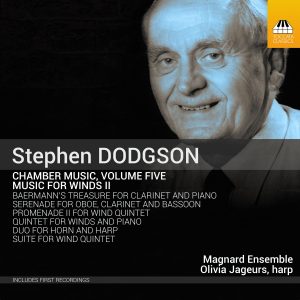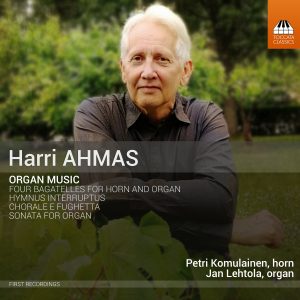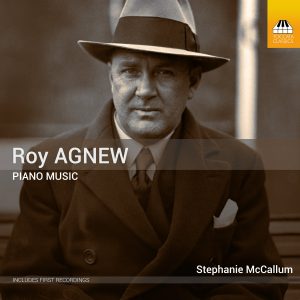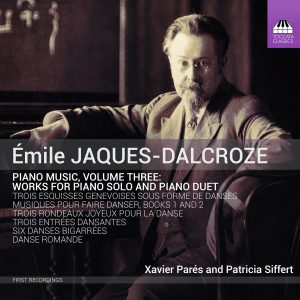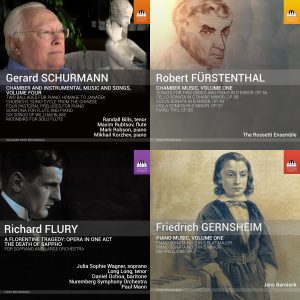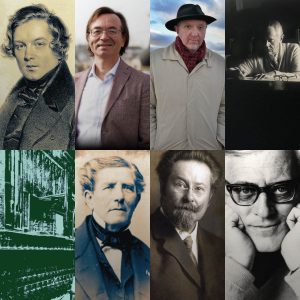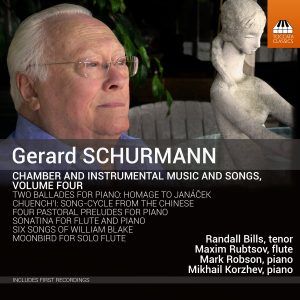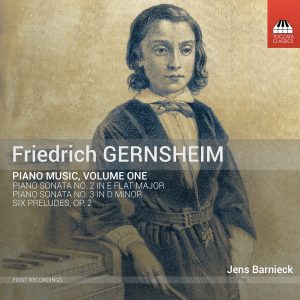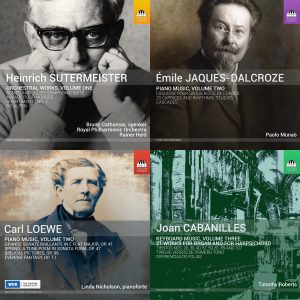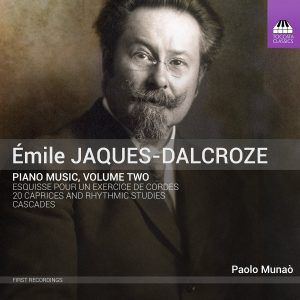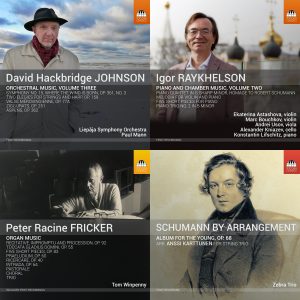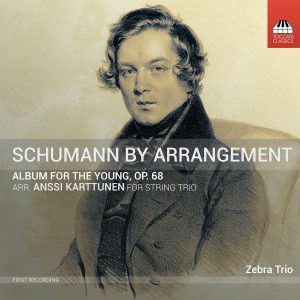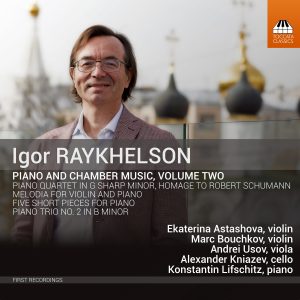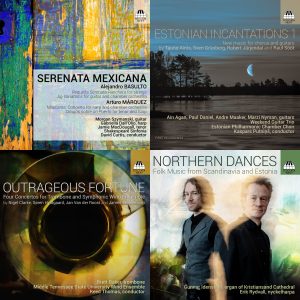Search Results for "Space Wolf: The First Omnibus mp3 torrent" – Page 55
Stephen DODGSON: Chamber Music, Volume Five: Music for Winds II
This fifth album in the Toccata Classics survey of the chamber music of London-born Stephen Dodgson (1924–2013) offers a second instalment of his many works for woodwinds, as well as a duo for the unusual combination of horn and harp. Much of it brings Dodgson’s sense of fun to the fore, often through rhythmic mischief or an insouciance that recalls Poulenc. It can have a spiky vivacity that suggests Janáček, too, and a hint of Baroque formality – but it also has that particularly English strain of lyricism that suggests the impermanence of beauty.
Magnard Ensemble
Suzannah Clements, flute (Tracks 16–20, 24)
Mana Shibata, oboe (Tracks 1–6, 16–20, 24)
Joseph Shiner, clarinet (Tracks 1–13, 15–20, 24)
Catriona McDermid, bassoon (Tracks 1–20, 24)
Jonathan Farey, horn (Tracks 1–2, 16–24)
Suling King, piano (Tracks 1–2, 7–15)
Olivia Jageurs, harp (Tracks 21-23)
Peter DICKINSON: Chamber and Solo Works
As pianist, writer and academic, Peter Dickinson – Lancashire-born in 1934 – has been one of the mainstays of British musical life for decades. Alongside these activities he is also a highly regarded composer, whose music, reconciling modernism and tradition, speaks directly to its listeners. This album presents works from the earlier part of his career, with an expressive range between delicate lyricism and wild, freewheeling energy, animated by a keen sense of instrumental drama.
Peter Sheppard Skærved, violin (Tracks 1-5, 9, 10, 13, 14)
Roderick Chadwick, piano (Tracks 1-3, 10, 14)
Kreutzer Quartet (6-9, 11-12)
Harri AHMAS: Organ Music
As Principal Bassoon in the Lahti Symphony Orchestra, Harri Ahmas (b. 1957) is one of Finland’s most highly regarded orchestral musicians. But he is also the composer of a substantial body of music, including four symphonies, eight concertos, much chamber music and a generous number of works for wind band. Some grandiose and powerful music for organ is threaded through his composing career, too, much of it composed for the musician who plays it here, Jan Lehtola.
Petri Komulainen, horn (Tracks 1-4)
Jan Lehtola, organ of St Paul’s Church, Helsinki (Tracks 1–4); organ of Turku Cathedral (Tracks 5-10)
Roy AGNEW: Piano Music
Roy Agnew (1891–1944) – one of few early-twentieth-century Australian composers to gain international success – wove many external influences into a warmly Romantic personal style of striking variety and wide appeal, and his compositions, largely for the piano, are startlingly virtuosic, harmonically daring and charmingly sentimental by turn. Beautifully written by a natural pianist for his own instrument, they often recall the virtuosic textures of Liszt and Skryabin and occasionally show flashes of the Impressionist colours of Debussy.
Stephanie McCallum, piano
Émile JAQUES-DALCROZE: Piano Music, Volume Three
The Swiss composer Émile Jaques-Dalcroze (1865–1950) is best remembered for his development of Eurhythmics, which teaches the appreciation of music through movement. The buoyant miniatures recorded here document his fascination with dance, including a flirtation with jazz and ragtime, although the apparent innocence of the music conceals a striking degree of metrical and rhythmic complexity, cast in a style not so far from Debussy and Fauré – and animated by the blithe spirit of Chabrier.
Notes en Français
Xavier Parés, piano (Tracks 1 – 6, 10 – 12), piano duet (Track 22)
Patricia Siffert, piano (Tracks 7 – 9, 13 – 21), piano duet (Track 22)
June 2019 Bundle
Included in this bundle:
Spring 2019 Double Bundle
Included in this double bundle:
- Igor Raykhelson: Piano & Chamber Music, Vol. 2
- Schumann by Arrangement
- David Hackbridge Johnson: Orchestral Music, Volume Three
- Peter Racine Fricker: Organ Music
- Carl Loewe: Piano Music, Volume Two
- Joan Cabanilles: Keyboard Music, Volume Three
- Émile Jaques-Dalcroze Piano Music, Volume Two
- Heinrich Sutermeister: Orchestral Works, Volume One
Gerard Schurmann: Chamber and Instrumental Music and Songs, Volume Four
This fourth Toccata Classics album of the chamber music of Gerard Schurmann – born in the former Dutch East Indies in 1924, naturalised Briton and now a resident of Los Angeles – adds two major song-cycles (one of them written for Britten and Pears) and works for flute and piano to the mix, in a distinctly personal language derived from influences ranging from Javanese gamelan to Bartók and Britten. Schurmann’s music somehow manages to blend elegant intensity and touching lyricism, with a result balanced between strength and sensitivity.
Randall Bills, tenor; Tracks 1-7, 16-21
Maxim Rubtsov, flute
Mark Robson, piano; Tracks 1-7, 9-12, 13-21
Mikhail Korzhev, piano; Track 13
Friedrich Gernsheim: Piano Music, Volume One
Friedrich Gernsheim (1839–1916), born in Worms, on the Rhine, grew up to be one of the most formidable musicians of his age: composer, pianist, conductor and teacher. Even as a teenager, Gernsheim was attracting attention as a virtuoso-composer, earning comparisons with Mozart. These two early piano sonatas – restored by Jens Barnieck from Gernsheim’s manuscripts – combine youthful freshness with praeternatural assuredness, showing awareness of Schumann and anticipating Brahms. By the time of the Six Preludes, written a decade later, Chopin has become the dominant star in Gernsheim’s firmament.
Jens Barnieck
May 2019 Bundle
Included in this bundle:
Émile Jaques-Dalcroze Piano Music, Volume Two
The Swiss composer Émile Jaques-Dalcroze (1865–1950) is best remembered for his development of Eurhythmics, which teaches the appreciation of music through movement. But Jaques-Dalcroze, who studied with Delibes and Fauré in Paris and with Bruckner and Fuchs in Vienna, was a considerable composer in his own right, with operas, cantatas and orchestral works among his substantial output. His 20 Caprices and Rhythmic Studies constitute an important but hitherto unknown set of character-studies, combining a relaxed lyricism with technical challenges of considerable subtlety for the player.
Notes en Français
Paolo Munaò, piano
April 2019 Bundle
Included in this bundle:
Schumann by Arrangement
Album for the Young, Op. 68. transcr. string trio by Anssi Karttunen
Schumann’s ‘Album fur das Jugend,’ Op. 68, of 1848 appears to be a collection of simple teaching pieces for children. But its unassuming exterior hides a wealth of interconnected references: to Bach and to William Blake (whose ‘Songs of Innocence and Experience’ it shadows), and to the life of the Romantic artist as reflected in nature and the passage of the seasons. Anssi Karttunen’s transcription for string trio brings a textural subtlety that enhances the unsuspected layers of meaning in Schumann’s modest miniatures. The Zebra Trio consists of the Austrian violinist Ernst Kovacic, Canadian violist Steven Dann and Finnish cellist Anssi Karttunen, each bringing a vast experience in chamber music, in different styles and in working with living composers to the world of the string trio. The Zebra Trio has always mixed familiar masterpieces with new works and transcriptions, combining all of these in creative ways in their concerts.
Zebra Trio
Igor Raykhelson: Piano & Chamber Music, Vol. 2
In his early days the composer-pianist Igor Raykhelson – born in Leningrad in 1961, once a New York resident and now based in Moscow – studied both classical and jazz piano. Both influences have combined to create a uniquely personal, Rachmaninov-plays-the-Blues Neo-Romantic style: not only is Raykelson unafraid to write a good tune- it’s clear right away whose tune it is. And in his chamber and instrumental works, the parlando manner that Raykhelson absorbed from jazz becomes particularly effective. Raykhelson’s chamber music is usually written for his friends, and here he is joined by some of Russia’s finest musicians, including the cellist Alexander Kniazev and the pianist Konstantin Lifschitz- and the violinist in Raykhelson’s lyrical ‘Melodia’ is his wife, Ekaterina Astashova.
Ekaterina Astashova, violin
Marc Bouchkov, violin
Andrei Usov, viola
Alexander Kniazev, cello
Konstantin Lifschitz, piano
March 2019 Bundle
Included in this bundle:
Stay In the Know
JOIN THE TOCCATA NEWSLETTER
"*" indicates required fields
By visiting our site, you agree to our privacy policy regarding cookies, tracking statistics, etc.
